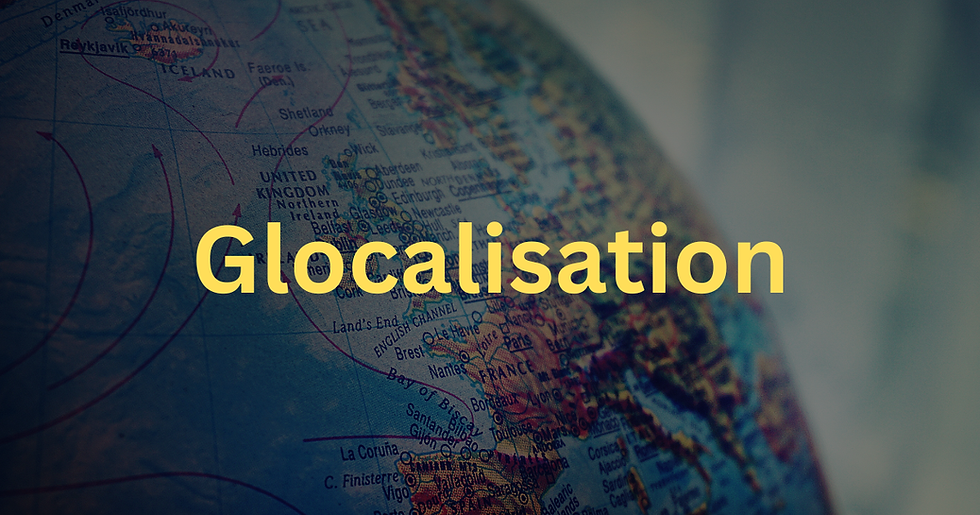Standardisation, and the Cultural Blind Spots of Global Business
- Ann Desseyn
- Oct 9
- 2 min read

Globalisation once promised efficiency through standardisation: unified products, messaging, and management systems that could scale effortlessly across borders. But as the authors of Riding the Waves of Culture (Trompenaars & Hampden-Turner) remind us, cultural diversity doesn’t dissolve under global logos. It deepens. And the companies that thrive are those that learn to reconcile global consistency with local meaning—the essence of glocalisation.
The Standardisation Trap
Corporations such as McDonald’s, Coca-Cola, or Apple have famously pursued global brand consistency. They operate with the assumption that what works in one country will translate, with minor adjustments, elsewhere. Yet even small “local adaptations”—adding McSpicy in India or green-tea lattes in China—do not necessarily address the deeper layers of culture: communication style, decision-making, hierarchy, or time orientation.
Standardisation often neglects the cultural values beneath behaviour. Trompenaars’ framework shows how dilemmas arise when universal corporate policies meet local expectations—for example, a company promoting transparency (a universalist value) may collide with cultures where indirect communication preserves harmony (a particularist value).
When Population Moves, Paradigms Shift
Today’s mobility and hybrid work blur the old cultural boundaries that the first generation of cross-cultural theorists mapped out. Multinational teams are no longer collections of distinct national identities—they are microcosms of mixed cultural experiences, shaped by migration, education, and digital collaboration.
In these environments, the cultural dilemmas described in Riding the Waves of Culture—such as individualism versus communitarianism or specific versus diffuse relationships—may no longer sit neatly within national borders. A German engineer raised in Singapore or a French manager leading a virtual team in Dubai carries multiple frames of reference.
Do Classic Cultural Theories Still Work?
The frameworks of Trompenaars, Hofstede, and Hall remain valuable as maps, not territories. They help leaders recognise that difference exists, and that values drive behaviour. But theory risks becoming brittle if used prescriptively—if it boxes people into static categories.
In mixed societies and multicultural teams, cultural understanding becomes less about applying theory and more about navigating ambiguity. The real skill is cultural agility: the ability to switch lenses, interpret intent, and reconcile competing norms rather than choosing one “correct” way.
The New Cultural Competence
In practice, this means organisations must move beyond token local adaptation and toward context-responsive leadership—one that invites reflection on how cultural paradigms are shifting inside their own teams. Training that blends intercultural theory with real-time observation, multilingual communication, and reflective dialogue remains essential.
Global brands can be local citizens too—but only when they understand that culture isn’t a variable to control. It’s the living environment in which every message, product, and relationship must breathe.



